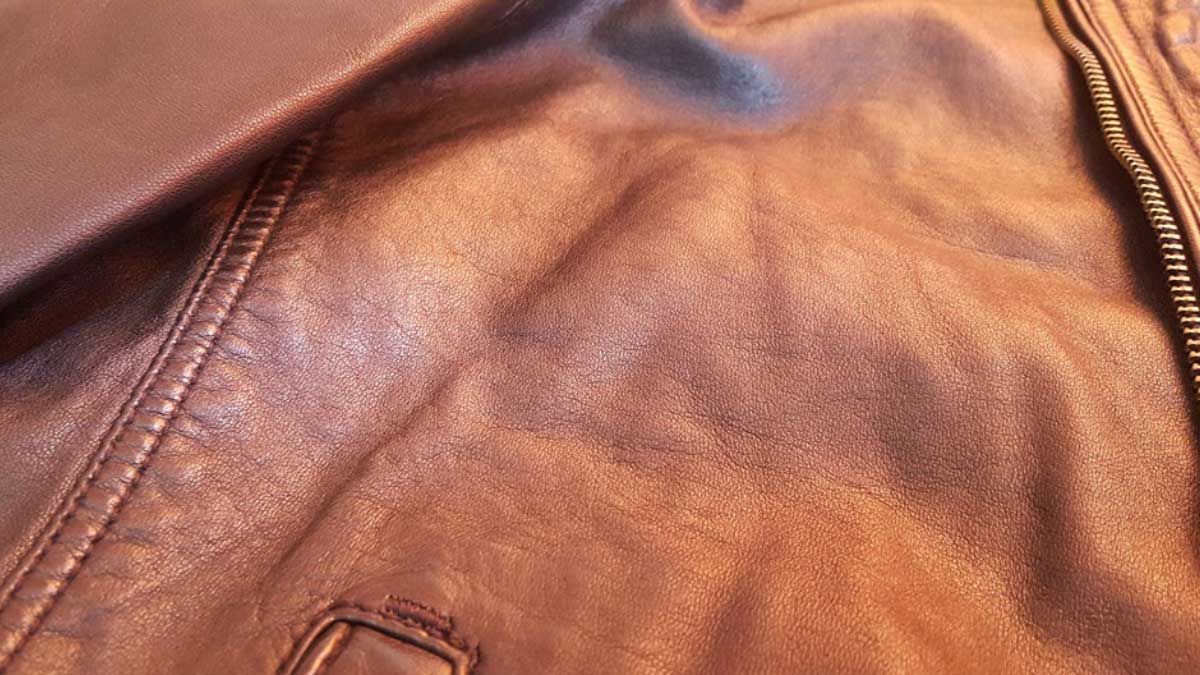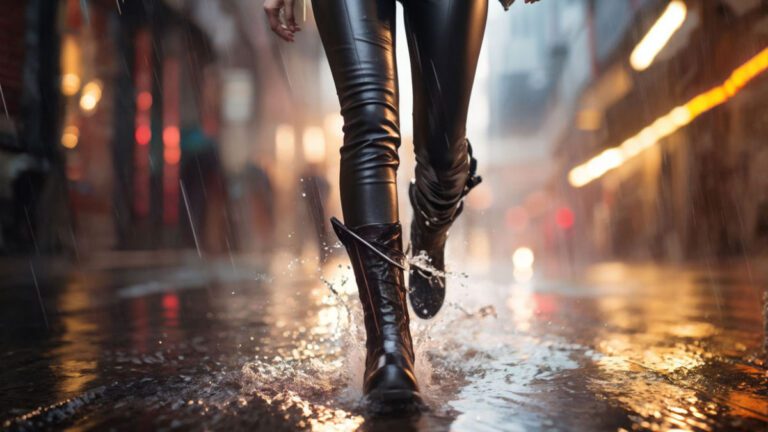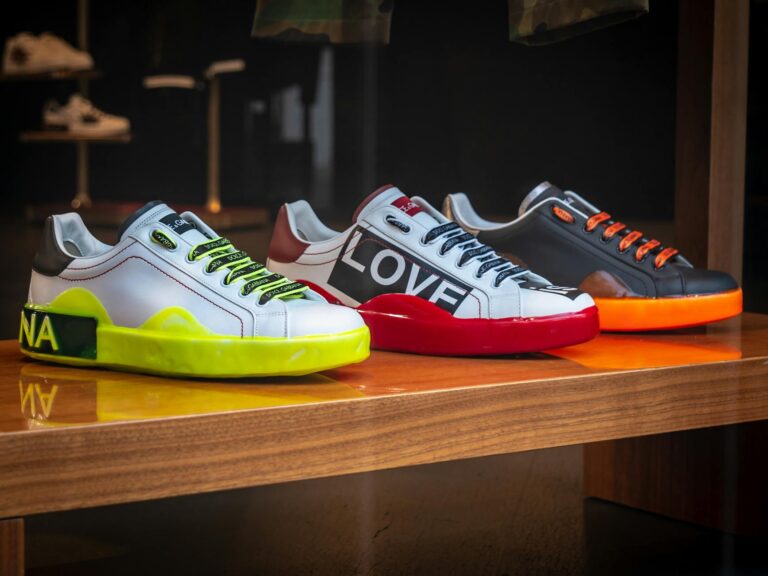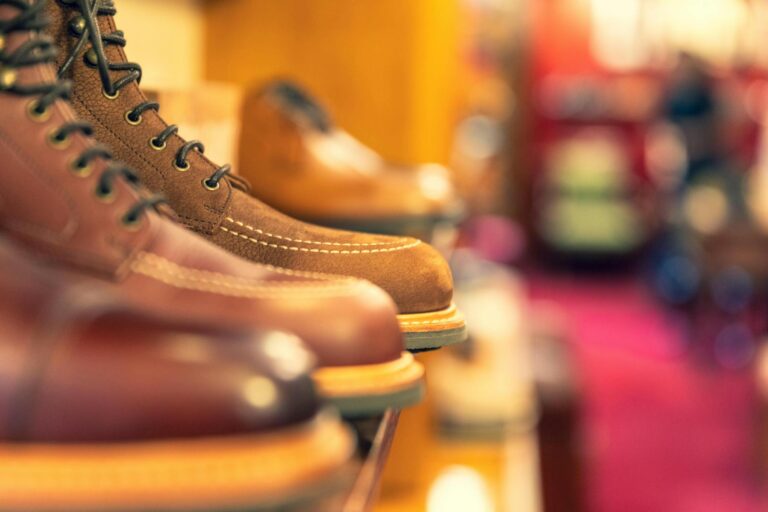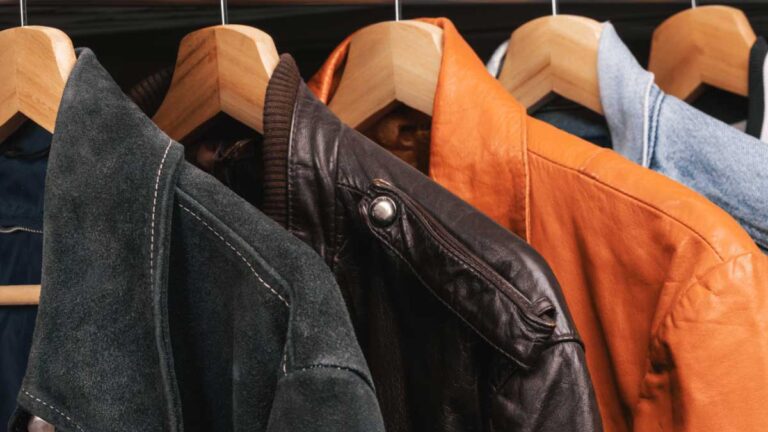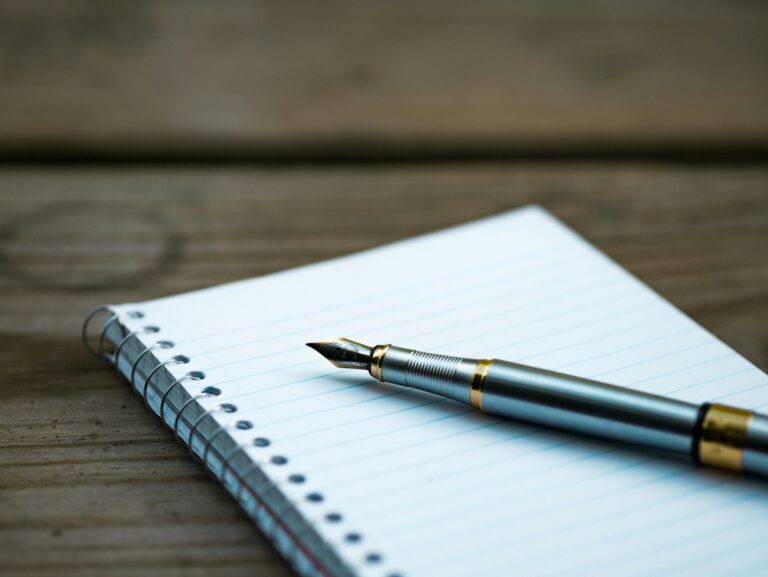How to Get Wrinkles Out of Leather: Safe Home Techniques
Leather’s timeless elegance makes it a popular choice for clothing, shoes, and furniture. But, even this durable material isn’t immune to the pesky problem of wrinkles, especially if it’s been stored improperly or used heavily. Wrinkles can mar the sleek appearance of your favorite leather items, but fear not—there are effective ways to restore their smooth finish.
Understanding how to handle leather properly can save you time and money. A little steam and low heat can work wonders in relaxing those unwanted creases. For instance, hanging a leather jacket in a steamy bathroom can help release wrinkles without causing damage. These simple techniques ensure your leather goods remain as stylish as the day you bought them.
Whether you’re dealing with a rumpled jacket or crumpled upholstery, knowing the right methods can keep your leather looking its best. Jump into these practical tips and say goodbye to wrinkles with confidence.
Key Takeaways
- Understanding and selecting appropriate methods is essential for effectively removing wrinkles from leather items to restore their smooth appearance.
- Utilizing steam, careful ironing, and a rubbing alcohol-water mixture are effective techniques for wrinkle removal, although each requires careful application to prevent damage.
- Regular cleaning, conditioning, and proper positioning are necessary preparatory steps that enhance the effectiveness of wrinkle removal methods.
- Preventative measures such as proper storage and consistent conditioning help maintain leather’s quality, reducing the likelihood of wrinkle formation.
- Different types of leather react uniquely to heat and moisture; understanding these differences ensures that suitable methods are used for wrinkle removal.
- Seeking professional help is advisable for high-value leather items, stubborn creases, or when standard at-home methods pose a risk of damage.
Effective Methods to Remove Wrinkles from Leather
Getting wrinkles out of leather can restore its elegance. Use the following methods for leather garments, accessories, and upholstery to remove creases effectively.
Using Steam for Leather Garments
Steam helps relax leather fibers, making it easier to smooth out wrinkles. Use either a steamer or the steam from a hot shower. Keep the steamer about six inches from the leather, maintaining distance to prevent damage. Hang the leather vertically, allowing gravity to assist in smoothing. Avoid direct steam on the leather as excess moisture can harm it.
Ironing Leather Carefully
Ironing leather requires caution. Place a clean towel over the wrinkled area as a barrier. Set the iron to low heat, never letting it contact the leather directly. Use gentle pressure and keep the iron moving to avoid overheating. This method helps redistribute the leather’s oils and smoothens the surface.
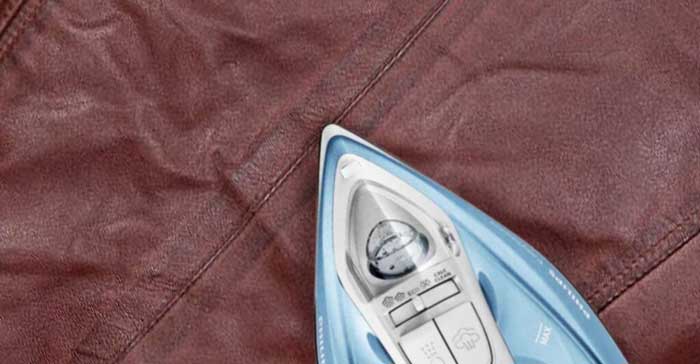
Applying Rubbing Alcohol and Water Mixture
A mixture of equal parts water and rubbing alcohol can temporarily loosen leather fibers, allowing you to smooth wrinkles. Apply the mixture sparingly with a spray bottle. Gently stretch and smooth the leather by hand. Remember, this method can dry out leather so conditioning afterward is crucial.
Using Heavy Books for Pressure
Using heavy books to press the leather is a non-invasive way to remove minor wrinkles. Place the leather on a flat, smooth surface and stack books on top, spreading them evenly. Leave it undisturbed for at least 24 hours. This method is effective for small items, like wallets or small bags.
These techniques provide several options for maintaining the pristine appearance of your leather items. Always start with the least invasive method to ensure the longevity and quality of the leather.
Preparing Leather for Wrinkle Removal
Start by inspecting the leather to determine the extent of the wrinkles and any other issues such as stains or tears. This helps in choosing the appropriate method for wrinkle removal and ensures optimal results.
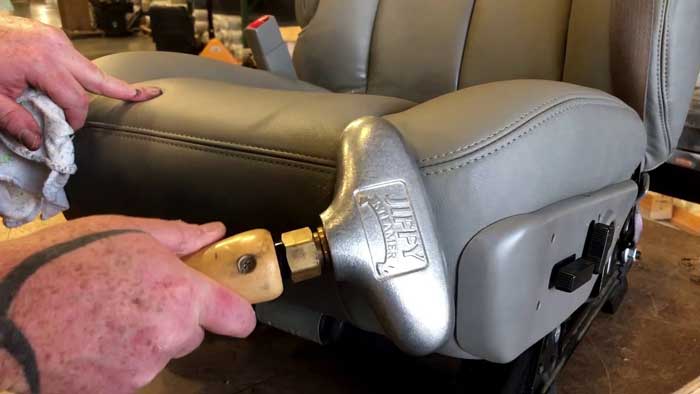
Cleaning and Conditioning the Leather
Ensure the leather is clean before starting wrinkle removal. Use a slightly damp towel to lightly wipe away any dust or debris from the leather’s surface, then dry it with another towel. This step is essential for the effectiveness of subsequent treatments. Once clean, apply a leather conditioner with a lint-free cloth or applicator pad in circular motions. Work the conditioner evenly across the surface to moisturize the leather, which helps in reducing wrinkle formation.
Properly Positioning and Securing the Leather
Position the leather on a flat surface with no creases to allow smooth application of treatments. Use filling materials like newspaper or packing paper to help the leather retain its shape as it dries, which aids in wrinkle reduction. This step is important for maintaining leather’s natural form and preventing new wrinkles. Make sure the material is taut but not stretched to avoid additional stress on the fibers.
Preventing Wrinkles in Leather
Preventing wrinkles in leather involves key strategies that maintain its quality and appearance over time.
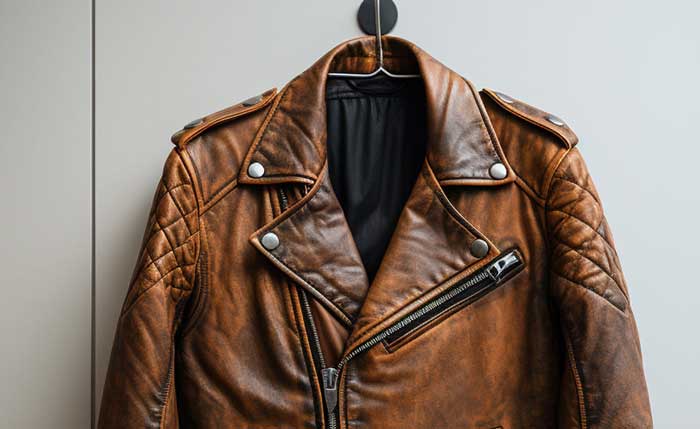
Proper Storage Techniques
Store leather items in ways that avoid creases. Use padded hangers for clothing and place items in well-ventilated spaces to promote air circulation. Avoid folding or cramming leather into tight spaces.
The Importance of Regular Conditioning
Keep leather supple through regular conditioning. Apply a pH-balanced leather conditioner to avoid dryness that leads to wrinkles. Use products free from harsh chemicals and alcohol that strip natural oils.
Travel Tips for Leather Items
Protect leather during travel by packing them carefully. Use garment bags to shield jackets and lay flat or gently roll items to prevent creases. Ensure bags are not overpacked to maintain leather’s shape.
Understanding Leather Types and Their Reactions
Different types of leather react uniquely to wrinkle removal techniques. Understanding these reactions helps ensure your leather remains in optimal condition.
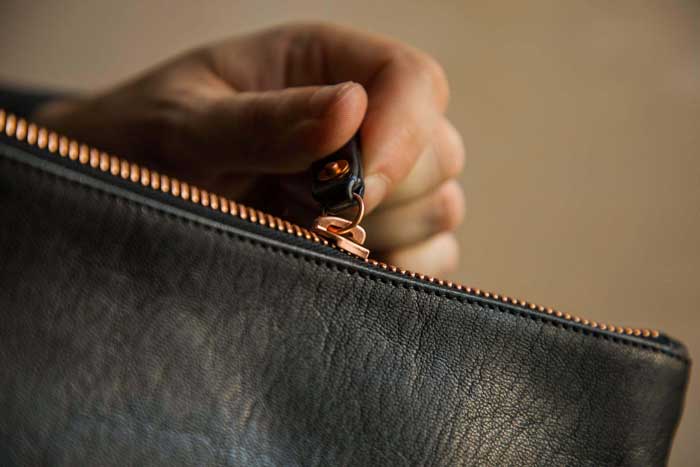
Genuine Leather vs. Faux Leather
- Genuine Leather: Made from animal hide, this type of leather is further classified into full-grain, top-grain, and bonded leather.
- Full-Grain & Top-Grain: These are durable and respond positively to conditioning, low heat, and moisture applications. They handle wrinkle removal better than lower-quality types.
- Bonded Leather: Being of lower quality, it’s more susceptible to damage from heat and moisture. Bonded leather may not respond effectively to the same wrinkle removal techniques as full-grain or top-grain leather.
- Faux Leather: Composed of synthetic materials like polyurethane or PVC, faux leather is more sensitive to heat and moisture. It can deform or melt if these methods are applied. So, wrinkle removal on faux leather requires alternative methods.
How Different Leathers Respond to Heat and Moisture
- Heat: Genuine leather benefits from controlled heat exposure. Low heat can gently smooth out creases when applied through methods like steaming or careful ironing with a protective barrier. For faux leather, high heat poses a risk of melting, making it crucial to avoid direct applications.
- Moisture: While genuine leather can absorb moisture, allowing it to aid in relaxing fibers, excessive exposure can lead to damage. Faux leather generally does not tolerate moisture well, and applying it can lead to warping or deformation.
- Genuine Leather: Test any product or method on a hidden area first to ensure no discoloration occurs. Use steam, low heat, or alcohol solutions cautiously to straighten fibers while avoiding overuse to prevent drying out the leather.
- Faux Leather: Avoid traditional methods involving heat and moisture. Instead, use gentle stretching techniques or specialized products designed for synthetic materials.
Understanding these distinctions and handling each type of leather with care is integral to ensuring your leather items remain smooth, durable, and aesthetically pleasing.
When to Seek Professional Help
Consider seeking professional help if your leather item holds significant value or if at-home methods risk further damage. Professionals possess specialized tools and expertise necessary for delicate or extensive wrinkle removal, ensuring the preservation of your item’s integrity.
- Stubborn Wrinkles: If repeated attempts using steam, low heat, or wrinkle-releasing solutions fail to smooth out the creases, a professional service may be necessary. They can employ advanced techniques, such as conditioning treatments or professional-grade equipment, to address persistent issues.
- Delicate Leather Types: Premium leather types like full-grain leather or exotic leather items, which may be more susceptible to damage, should be treated with care. Professionals can tailor their approach to the specific needs of fine leather, minimizing the chance of harm.
- Severe Distortions: If the leather is extremely wrinkled or distorted, professionals can assess and rectify the issue using methods that prevent further deformation. Their expertise ensures that the leather retains its shape and functionality.
- Integrated Technology: Items with built-in technology, such as heated leather seats, require professional assessment to avoid damaging intricate components. Skilled technicians can effectively manage these complexities while maintaining safety standards.
Professional services provide peace of mind, especially for valuable or sensitive leather items, by applying the most appropriate techniques to restore leather to its best condition.
Conclusion
Maintaining the elegance of your leather items doesn’t have to be daunting. By applying gentle techniques like steaming or using low heat, you can effectively smooth out wrinkles without compromising the material’s integrity. Remember to always inspect your leather for any damage before starting and keep it clean and conditioned to minimize future creases. Proper storage and handling are essential to prevent wrinkles, ensuring your leather remains supple and stylish. For more delicate or valuable pieces, don’t hesitate to seek professional help to preserve their quality. With these insights, you’re well-equipped to keep your leather looking its best for years to come.
Frequently Asked Questions
How can I remove wrinkles from leather clothing effectively?
To remove wrinkles from leather clothing, first inspect for stains or tears. Hang the garment in a steamy bathroom to relax fibers. For stubborn wrinkles, use a steam iron on low, with a towel barrier. Alternatively, apply a mixture of rubbing alcohol and water, then smooth with hands. Always clean your leather and condition it afterward to maintain its suppleness and prevent future wrinkles.
What are the best practices for storing leather items to prevent wrinkles?
For wrinkle prevention, store leather items on padded hangers with good air circulation, avoiding folds. Regularly condition with a pH-balanced leather conditioner to keep the material supple. For travel, use garment bags and avoid overpacking to maintain a smooth finish.
Can I iron leather to get rid of wrinkles?
Yes, you can iron leather with caution. Place a towel over the leather item and set your iron to a low setting. Gently move the iron over the towel to protect the leather from direct heat. This method helps smooth out wrinkles effectively.
How should I care for faux leather to prevent damage during wrinkle removal?
Faux leather can be more sensitive than genuine leather. Avoid direct heat and moisture; instead, try gentle stretching of the material. Specialized faux leather products are available to assist with wrinkle removal. Always test on a hidden area first.
When should I consider professional help for leather wrinkle removal?
Seek professional help for stubborn wrinkles, delicate leather types, or valuable items at risk of damage from home methods. Professionals have advanced techniques to safely restore and maintain the quality of special leather goods.

